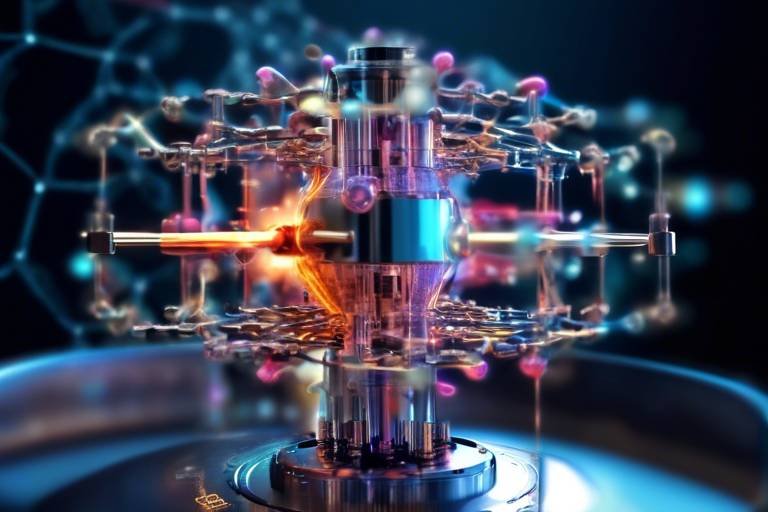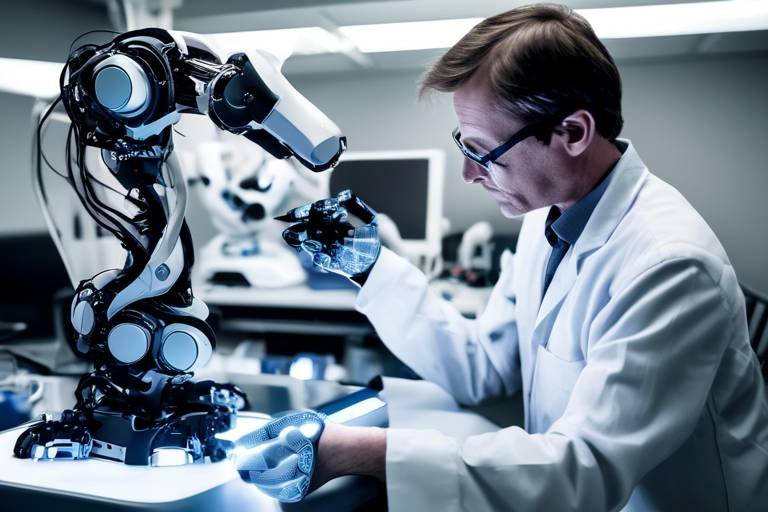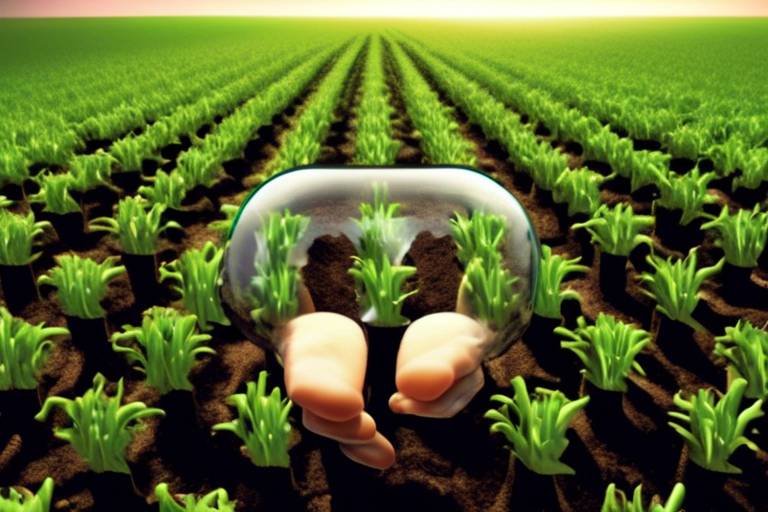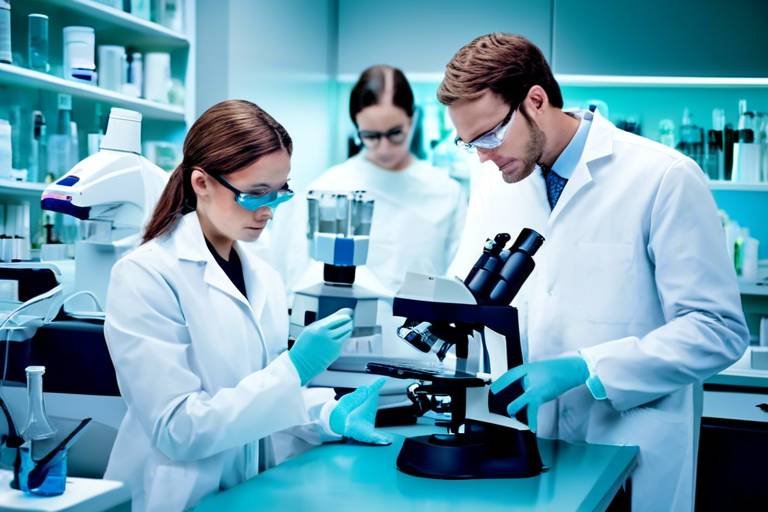The Future of Agricultural Technology Innovations
As we stand on the brink of a new era in farming, the landscape of agriculture is undergoing a remarkable transformation. The integration of innovative technologies is not just a trend; it’s a revolution that promises to reshape how we cultivate crops, manage resources, and ensure food security for a growing global population. With the advent of precision farming, artificial intelligence, and sustainable practices, the future of agriculture is bright, filled with exciting possibilities that enhance productivity while caring for our planet.
Imagine walking through a field where every plant is monitored by a network of sensors, each one providing real-time data on soil health, moisture levels, and crop growth. This is the essence of precision agriculture, where data-driven techniques optimize field-level management. Farmers can now make informed decisions that maximize crop yields while minimizing environmental impacts. It’s akin to having a personal assistant who knows exactly what your plants need, when they need it, and how to get the best results without wasting resources.
But that’s just the beginning. Enter artificial intelligence and machine learning. These technologies are revolutionizing farming practices by offering predictive analytics that enhance decision-making. From selecting the right crops to managing pests, AI is like a crystal ball for farmers, providing insights that were previously unimaginable. With advanced algorithms analyzing vast amounts of data, farmers can anticipate challenges and adapt their strategies accordingly, ensuring that their operations are not just reactive but proactive.
Consider the impact of automated farming equipment. Drones and robotic harvesters are streamlining agricultural processes, reducing labor costs, and increasing efficiency. Drones, for instance, provide farmers with aerial imagery that helps in crop health analysis, irrigation management, and even targeted pesticide application. Imagine being able to survey hundreds of acres in a matter of minutes, identifying problem areas before they escalate into significant issues. This technology is not just a luxury; it’s becoming essential for modern farming.
Robotic harvesters are another game-changer, designed to pick fruits and vegetables with precision and speed. As labor shortages become more prevalent, these machines are stepping in to ensure that crops are harvested at the optimal time, reducing waste and increasing profitability. It’s a fascinating blend of technology and agriculture that addresses real-world challenges while paving the way for a more efficient future.
Another exciting innovation is the advent of smart irrigation systems. By leveraging Internet of Things (IoT) technology, these systems monitor soil moisture levels and weather conditions, enabling farmers to apply water precisely when and where it’s needed. This not only conserves water—one of our most precious resources—but also enhances crop health, ensuring that plants receive the right amount of hydration without the risk of overwatering. It’s like having a smart watering system that knows exactly what your plants crave.
As we look to the future, it’s clear that sustainable farming practices are crucial. These methods focus on protecting the environment while ensuring food security and economic viability for farmers. Techniques such as organic farming, agroforestry, and permaculture are gaining traction, emphasizing natural processes and biodiversity. By reducing reliance on synthetic chemicals, these practices promote healthier ecosystems, creating a balance between agriculture and nature.
The role of biotechnology in agricultural innovation is also pivotal. With advancements in genetic engineering, we can develop crops that are more resilient to environmental stresses, pests, and diseases. Genetically Modified Organisms (GMOs) are engineered to improve yield and reduce pesticide use, contributing to sustainable agricultural practices. Moreover, innovative crop breeding techniques like CRISPR allow for precise modifications to plant genetics, resulting in faster development of improved crop varieties. This is not just about enhancing production; it’s about ensuring that our food systems can withstand the challenges of tomorrow.
In conclusion, the future of agricultural technology is not just about adopting new tools; it’s about reimagining the way we grow food. With precision agriculture, AI, automation, sustainable practices, and biotechnology leading the charge, we are on a path toward a more efficient, productive, and environmentally friendly agricultural landscape. The innovations we embrace today will determine the health of our planet and the security of our food systems for generations to come.
- What is precision agriculture? Precision agriculture uses data-driven techniques to optimize field management, ensuring efficient resource use and maximizing crop yield.
- How does AI impact farming? AI enhances decision-making through predictive analytics, helping farmers with crop selection, pest management, and more.
- What are the benefits of drones in agriculture? Drones provide aerial imagery for crop health analysis, irrigation management, and targeted pesticide application, increasing efficiency.
- What is sustainable farming? Sustainable farming focuses on methods that protect the environment while ensuring food security and economic viability for farmers.
- How does biotechnology contribute to agriculture? Biotechnology offers solutions for crop resilience, pest resistance, and enhanced nutritional content, addressing global food challenges.
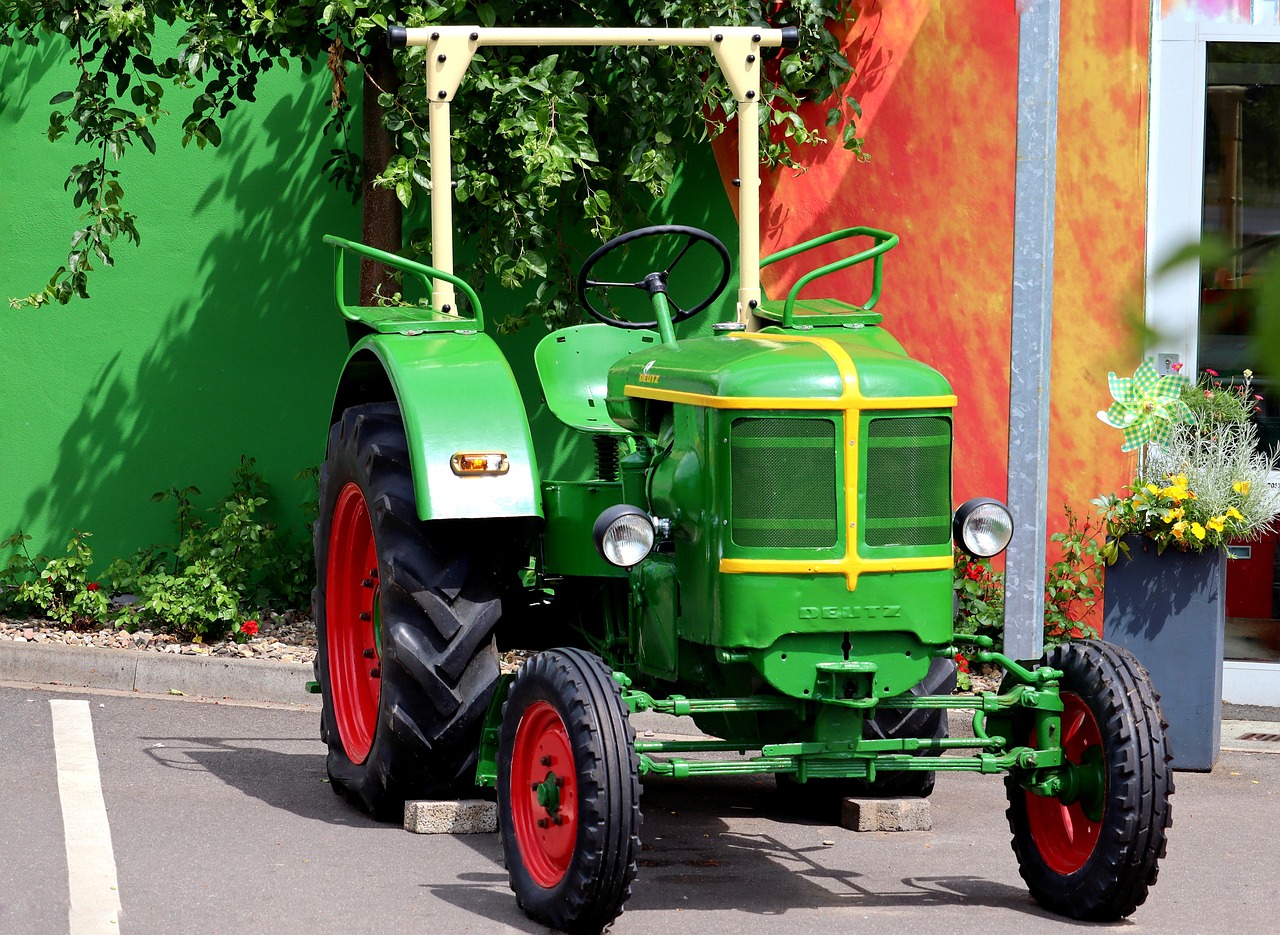
Precision Agriculture
is not just a buzzword; it's a revolutionary approach that is reshaping the farming landscape. Imagine walking through a vast field and having the ability to know exactly where to plant seeds, how much water to use, and when to apply fertilizers—all backed by data. This is the power of precision agriculture, which utilizes cutting-edge technologies and data-driven techniques to optimize field-level management. By harnessing the potential of GPS technology, remote sensing, and data analytics, farmers can make informed decisions that significantly enhance crop yields while also minimizing environmental impact.
At its core, precision agriculture aims to ensure the efficient use of resources. Traditional farming methods often lead to overuse of fertilizers and water, which can harm the environment. In contrast, precision farming employs a variety of tools and technologies to tailor inputs to specific areas of a field. For instance, by using soil sensors, farmers can determine the exact moisture levels in different parts of their fields. This means they can apply water only where it’s needed, conserving this precious resource while promoting healthier crops.
One of the standout features of precision agriculture is its ability to maximize crop yield. By analyzing data collected from various sources, farmers can identify which crops will thrive in specific conditions and adjust their planting strategies accordingly. This not only improves productivity but also helps in managing risks associated with climate variability. For example, if a particular region is experiencing drought conditions, farmers can shift their focus to drought-resistant crop varieties, thereby safeguarding their investments.
Moreover, precision agriculture contributes to sustainability. By reducing the dependency on chemical inputs and optimizing resource use, it plays a vital role in protecting the environment. Farmers are increasingly recognizing that sustainable practices not only benefit their bottom line but also contribute to the health of the planet. As the global population continues to grow, the need for sustainable food production becomes increasingly urgent, making precision agriculture an essential tool in the fight against food insecurity.
To illustrate the impact of precision agriculture, consider the following table that outlines some key technologies and their benefits:
| Technology | Benefits |
|---|---|
| GPS Technology | Enables precise field mapping and resource allocation. |
| Remote Sensing | Provides real-time data on crop health and soil conditions. |
| Data Analytics | Facilitates informed decision-making based on historical and real-time data. |
| Soil Sensors | Monitors moisture levels and nutrient content for optimized input application. |
In conclusion, precision agriculture represents a significant leap forward in farming practices. It empowers farmers with the tools they need to make smarter decisions, ultimately leading to increased productivity and sustainability. As we look to the future, embracing these innovative technologies will be crucial in addressing the challenges of food production in a rapidly changing world.
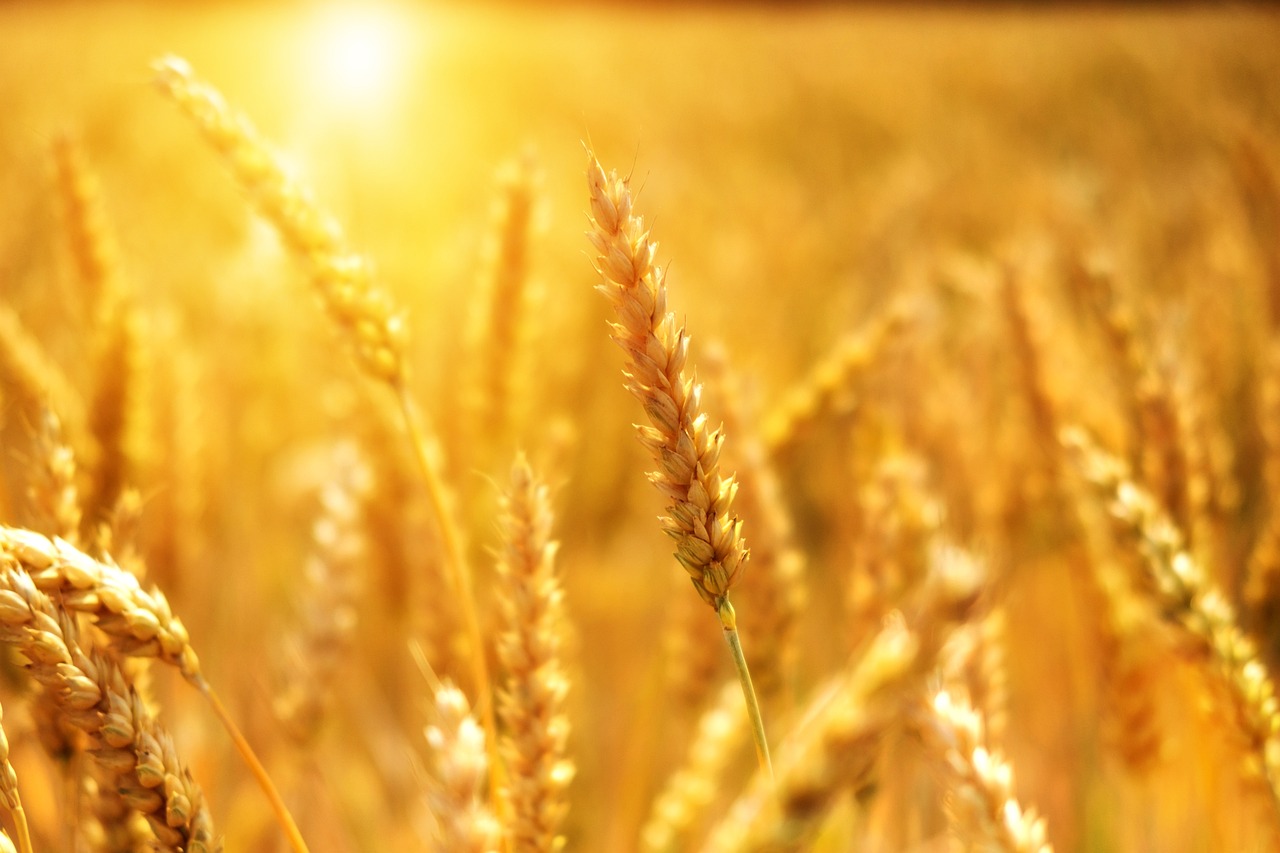
AI and Machine Learning in Farming
Artificial intelligence (AI) and machine learning are not just buzzwords; they are transforming the landscape of agriculture in ways that were once thought to be the stuff of science fiction. Imagine a world where farmers can predict crop yields with pinpoint accuracy or identify pest infestations before they become a significant problem. This is the reality that AI is creating in farming today. By harnessing the power of data, farmers are making smarter decisions that can lead to increased productivity and reduced costs.
At the core of this transformation is data. Farms generate a vast amount of information, from soil moisture levels to weather patterns, and AI algorithms are adept at analyzing this data to uncover patterns and insights. For instance, machine learning models can process historical data to forecast future yields, allowing farmers to plan their planting and harvesting schedules more effectively. This predictive capability is like having a crystal ball that helps farmers make informed choices, ultimately leading to better resource management and higher profits.
One of the most exciting applications of AI in farming is in the realm of precision agriculture. With the help of AI-driven tools, farmers can optimize their input usage—whether it's water, fertilizers, or pesticides—ensuring they apply just the right amount at the right time. This not only enhances crop yield but also minimizes waste and reduces environmental impact. For example, an AI system could analyze soil data to recommend specific fertilizer types and quantities tailored to each field, resulting in healthier crops and a more sustainable approach to farming.
As AI technology advances, we see a rise in automated farming equipment that incorporates machine learning algorithms. This includes everything from autonomous tractors to drones equipped with sensors. These machines can operate with minimal human intervention, performing tasks such as planting, monitoring, and harvesting crops. The efficiency gained through automation can significantly cut labor costs and enhance the overall productivity of farming operations.
Drones are becoming essential tools for modern farmers. They provide aerial imagery that can be used for various purposes:
- Crop Health Analysis: Drones equipped with multispectral cameras can assess crop health by capturing images that reveal plant stress levels.
- Irrigation Management: By identifying dry areas in fields, drones help farmers apply water more efficiently, conserving this precious resource.
- Pesticide Application: Drones can deliver targeted pesticide treatments, reducing chemical use and minimizing environmental impact.
Robotic harvesters are another groundbreaking innovation in agriculture. These machines are designed to pick fruits and vegetables with remarkable speed and accuracy. They address the ongoing labor shortages faced by many farms and ensure that crops are harvested at the optimal time, which is crucial for maintaining quality and maximizing yield. The integration of AI in these robots allows them to learn and adapt to various harvesting conditions, making them more effective over time.
In conclusion, the integration of AI and machine learning in farming is a game-changer. It empowers farmers to make data-driven decisions, enhances operational efficiency, and promotes sustainable practices. As technology continues to evolve, the future of agriculture looks promising, with AI playing a pivotal role in ensuring food security and environmental stewardship.
Q1: How does AI improve crop yield?
AI analyzes vast amounts of data to provide insights on optimal planting times, soil health, and resource allocation, leading to higher crop yields.
Q2: What are the main benefits of using drones in agriculture?
Drones offer crop health monitoring, efficient irrigation management, and targeted pesticide application, all of which contribute to increased productivity and sustainability.
Q3: Are robotic harvesters effective?
Yes, robotic harvesters are designed to pick crops quickly and accurately, addressing labor shortages and improving harvesting efficiency.
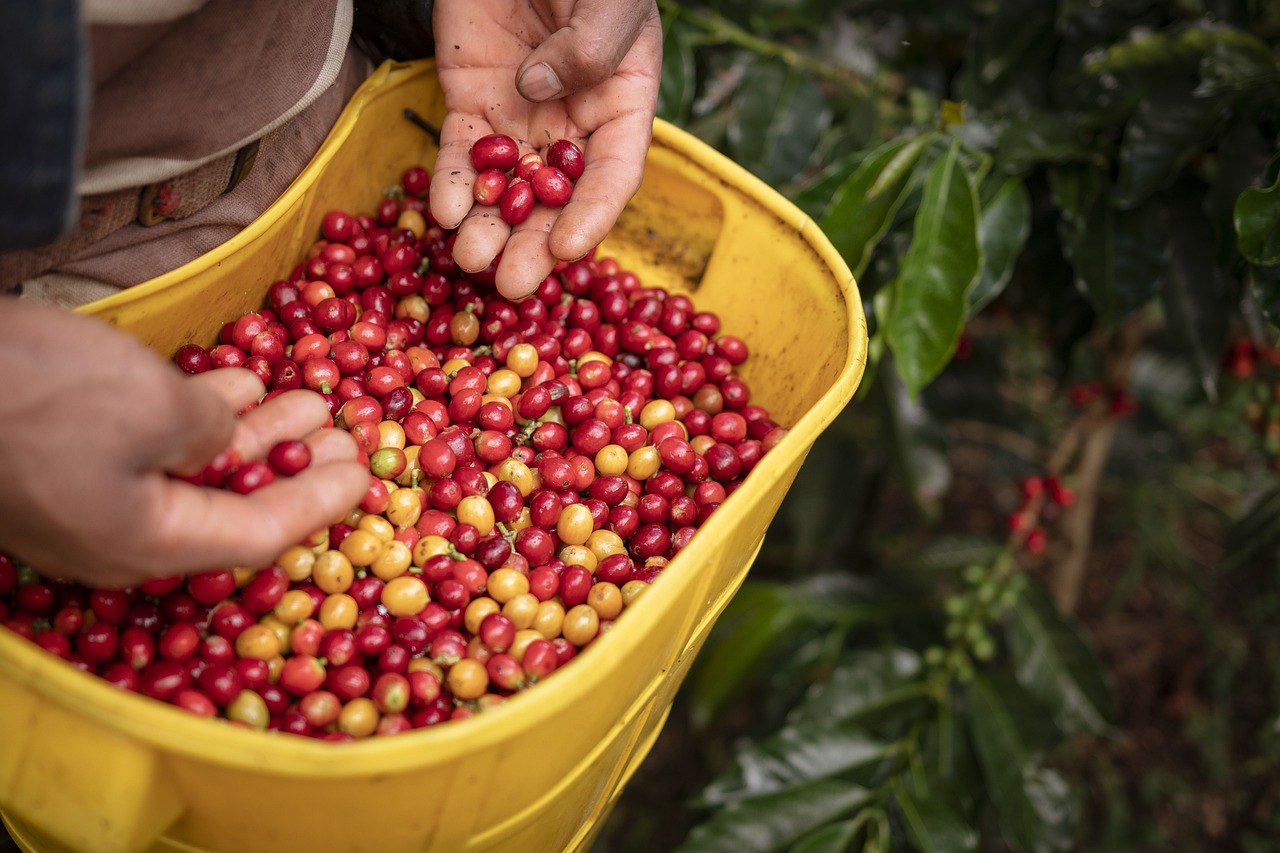
Automated Farming Equipment
In the ever-evolving landscape of agriculture, stands out as a beacon of innovation. These technological marvels are not just a luxury; they are becoming essential tools that redefine how we approach farming. Imagine a world where farmers can monitor their fields from the sky, or where machines can harvest crops with precision and speed—this is not science fiction; it's the reality of modern agriculture.
Automated farming equipment encompasses a broad range of technologies designed to streamline agricultural processes. One of the most notable advancements is the use of drones. These flying machines have transformed the way farmers assess crop health. Equipped with high-resolution cameras and sensors, drones provide aerial imagery that helps farmers make informed decisions about irrigation, pest control, and overall crop management. For instance, a farmer can identify areas of a field that require more water or detect early signs of disease, allowing for timely interventions that can save entire harvests.
In addition to drones, robotic harvesters are revolutionizing the harvesting process. Traditionally, harvesting has been labor-intensive and time-consuming. However, with the advent of robotic technology, farmers can now deploy machines that efficiently pick fruits and vegetables, reducing the reliance on human labor. These robots are equipped with advanced sensors that allow them to differentiate between ripe and unripe produce, ensuring that only the best quality crops are harvested. This not only improves efficiency but also minimizes waste, as the robots can operate around the clock, harvesting crops at their peak.
Moreover, the integration of Internet of Things (IoT) technology into automated farming equipment enhances their capabilities. Smart tractors and other machinery can collect and analyze data in real-time, enabling farmers to optimize their operations based on current field conditions. For example, a smart tractor can adjust its speed and the amount of fertilizer it applies based on soil nutrient levels detected during operation. This level of precision is not just about increasing yield; it's also about being a responsible steward of the land.
To summarize, the rise of automated farming equipment is reshaping the agricultural landscape. With drones providing critical aerial insights and robotic harvesters improving efficiency, farmers are better equipped to meet the challenges of modern agriculture. These innovations not only enhance productivity but also promote sustainable practices, making it easier for farmers to manage their resources wisely. As we look to the future, it's clear that technology will continue to play a pivotal role in agriculture, helping us to feed a growing population while preserving our planet.
- What types of automated farming equipment are available? There are various types, including drones, robotic harvesters, smart tractors, and automated irrigation systems.
- How do drones improve agricultural practices? Drones provide aerial imagery for monitoring crop health, managing irrigation, and applying pesticides accurately.
- Are robotic harvesters cost-effective? Yes, while the initial investment may be high, they significantly reduce labor costs and increase efficiency in harvesting.
- Can automated farming equipment help with sustainability? Absolutely! By optimizing resource use and reducing waste, these technologies contribute to more sustainable farming practices.
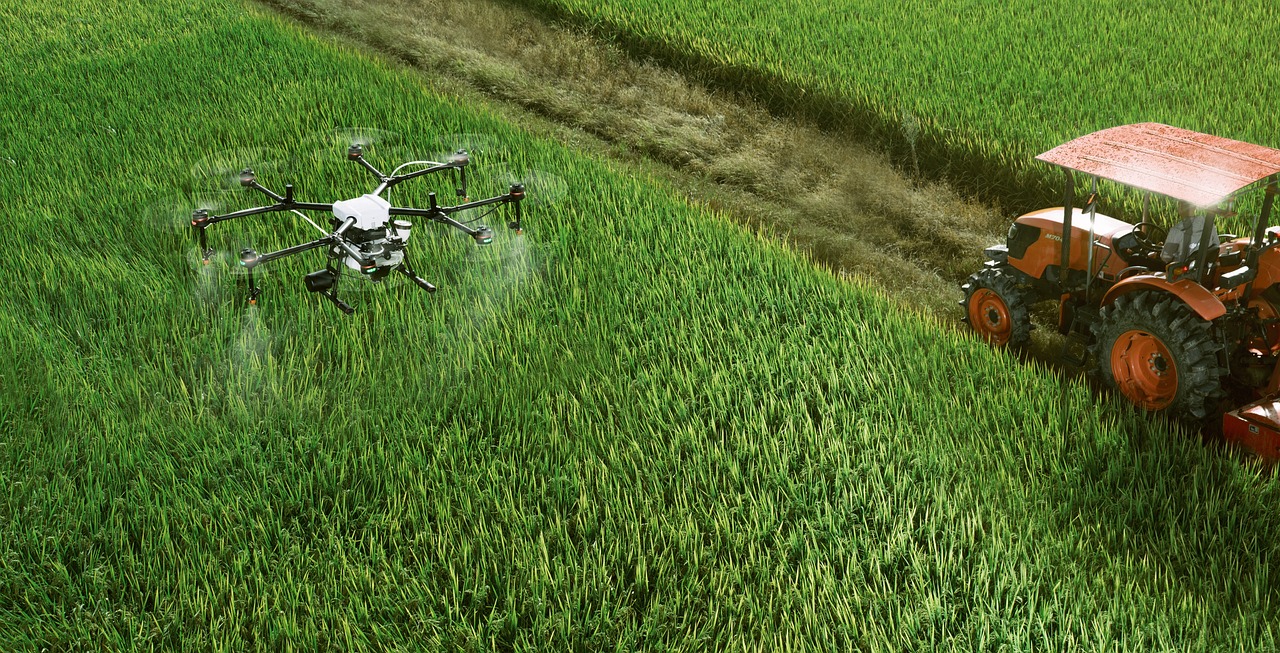
Benefits of Drone Technology
In the world of agriculture, drone technology is emerging as a game-changer, transforming how farmers manage their fields and crops. Imagine soaring above your fields, equipped with a bird's-eye view that reveals every detail of your crops. This is what drones offer—an unparalleled perspective that traditional farming methods simply can't match. By utilizing drones, farmers can gather critical data that enhances decision-making, ultimately leading to better crop yields and more efficient resource use.
One of the most significant advantages of drone technology is its ability to provide real-time aerial imagery. This imagery allows farmers to monitor crop health effectively. With multispectral cameras, drones can capture data that reveals how plants are performing, identifying areas that may require attention. For instance, if certain sections of a field are underperforming, farmers can act quickly to address issues such as nutrient deficiencies or pest infestations, saving both time and resources.
Moreover, drones play a crucial role in irrigation management. By assessing soil moisture levels and identifying dry patches, farmers can optimize their irrigation systems. This targeted approach not only conserves water but also ensures that crops receive the right amount of moisture, promoting healthier growth. In an age where water scarcity is a growing concern, this capability is invaluable.
Another remarkable benefit of drones is their potential for targeted pesticide application. Instead of spraying entire fields indiscriminately, farmers can use drones to apply pesticides only where they are needed. This not only reduces chemical usage, which is better for the environment, but also minimizes costs for farmers. Imagine cutting down on pesticide expenses while simultaneously protecting beneficial insects and maintaining a healthier ecosystem!
In addition to these practical applications, drones can significantly enhance the efficiency of crop monitoring. Traditional methods of scouting fields can be time-consuming and labor-intensive. Drones can cover large areas in a fraction of the time, allowing farmers to focus on other critical tasks. This increased efficiency means that farmers can spend less time worrying about logistics and more time nurturing their crops and improving overall productivity.
To summarize, the benefits of drone technology in agriculture are profound and multifaceted. Here’s a quick overview:
- Real-time aerial imagery for monitoring crop health
- Enhanced irrigation management through soil moisture assessment
- Targeted pesticide application to reduce chemical use
- Increased efficiency in crop monitoring and management
As technology continues to advance, we can expect even more innovative uses for drones in agriculture. From improving sustainability practices to boosting productivity, the future is bright for farmers who embrace this cutting-edge technology. The integration of drones into farming not only represents a leap forward in agricultural practices but also a commitment to a more efficient and sustainable future.
Q: How do drones improve crop health monitoring?
A: Drones equipped with advanced cameras can capture detailed images of crops, allowing farmers to identify health issues like nutrient deficiencies or pest infestations quickly.
Q: Are drones cost-effective for small farms?
A: Yes, while there is an initial investment, the long-term savings from optimized resource use and increased yields can make drones a cost-effective solution for small farms.
Q: Can drones be used for irrigation management?
A: Absolutely! Drones can assess soil moisture levels and help farmers apply water more efficiently, conserving resources and promoting healthier crops.
Q: What types of drones are best for agricultural use?
A: Drones specifically designed for agriculture often include features like multispectral cameras and GPS capabilities, which enhance their effectiveness in monitoring crops.
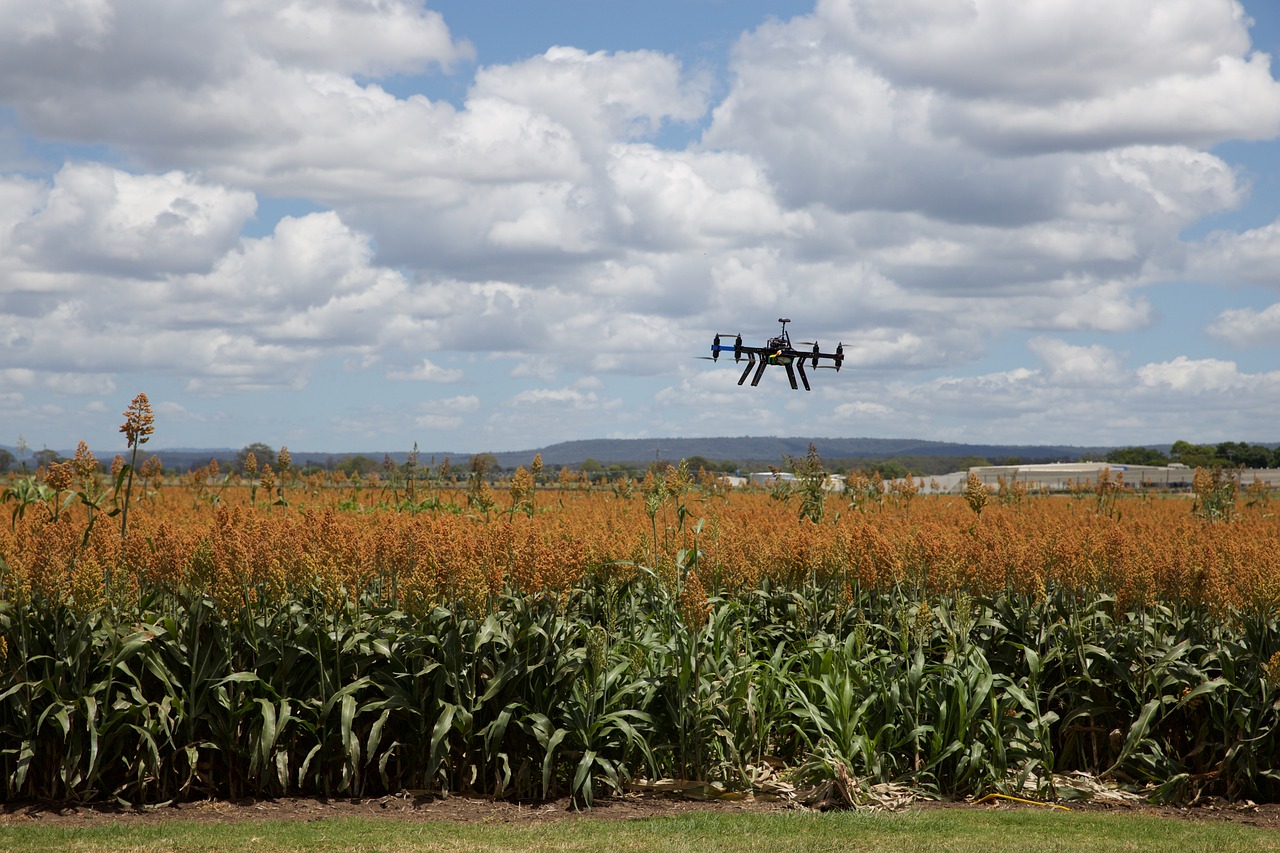
Robotic Harvesting Solutions
The world of agriculture is rapidly evolving, and one of the most exciting developments is the rise of . These advanced machines are not just futuristic gadgets; they are transforming the way we approach harvesting crops. Imagine a field where robots seamlessly glide through rows of crops, picking fruits and vegetables with precision and speed that no human can match. This isn't science fiction—it's happening right now!
Robotic harvesters are designed to tackle some of the biggest challenges faced by farmers today, particularly the persistent issue of labor shortages. As the agricultural workforce ages and fewer young people enter the field, the need for efficient harvesting solutions becomes more pressing. By implementing robotic systems, farmers can not only maintain productivity but also enhance the quality of their harvests. These machines are equipped with sophisticated sensors and artificial intelligence, allowing them to identify ripe produce and pick it without damaging the plants.
One of the most significant advantages of robotic harvesting is increased efficiency. Traditional harvesting methods can be labor-intensive and time-consuming. In contrast, robotic systems can operate around the clock, significantly reducing the time required to harvest crops. For instance, a robotic harvester can cover vast fields in a fraction of the time it takes human workers, leading to faster turnaround times and fresher produce on the market. This efficiency is not just about speed; it also translates into cost savings for farmers, who can allocate their labor resources more effectively.
Moreover, the precision of robotic harvesters minimizes waste. These machines are programmed to recognize the optimal moment for harvesting, ensuring that crops are picked at their peak ripeness. This not only enhances the quality of the produce but also reduces the amount of food waste that occurs during the harvesting process. In a world where food security is a growing concern, these innovations are crucial.
As we look to the future, it's clear that robotic harvesting solutions will play a vital role in the sustainability of agriculture. By integrating these technologies, farmers can achieve greater productivity while minimizing their environmental impact. These machines can also be designed to work alongside traditional farming practices, creating a harmonious balance between technology and nature.
In conclusion, robotic harvesting solutions represent a significant leap forward in agricultural technology. They address critical challenges such as labor shortages, efficiency, and sustainability, making them an essential part of the modern farming landscape. As these technologies continue to develop, we can expect even more innovative solutions that will shape the future of agriculture.
- What are robotic harvesters? Robotic harvesters are automated machines designed to pick fruits and vegetables efficiently and accurately, reducing the need for manual labor.
- How do robotic harvesters improve efficiency? They can operate continuously, cover large areas quickly, and are programmed to pick crops at their optimal ripeness, thus saving time and reducing waste.
- Are robotic harvesters expensive? While the initial investment can be high, the long-term savings in labor costs and increased efficiency often justify the expense for many farmers.
- Can robotic harvesters work with all types of crops? Many robotic harvesters are specialized for certain crops, but ongoing advancements are making them more versatile.

Smart Irrigation Systems
In the ever-evolving landscape of agriculture, are emerging as a game-changer. These innovative systems harness the power of the Internet of Things (IoT) to monitor various environmental parameters, ensuring that crops receive just the right amount of water at the right time. Imagine a world where farmers can remotely manage their irrigation systems from their smartphones, receiving real-time data about soil moisture levels, rainfall forecasts, and temperature fluctuations. This is not just a dream; it's the reality of modern farming!
At the heart of smart irrigation systems lies a network of sensors strategically placed throughout the fields. These sensors collect vital information about the soil's moisture content and send it to a central system. The system then analyzes this data and makes informed decisions about when and how much water to apply. This data-driven approach not only conserves water but also promotes healthier crops by preventing over-watering and under-watering.
One of the standout features of these systems is their ability to adapt to changing weather conditions. For instance, if rain is forecasted, the system can automatically delay irrigation, saving precious water resources. This adaptability is crucial, especially in regions prone to drought or water scarcity. By utilizing smart irrigation, farmers can achieve significant reductions in water usage—often by as much as 30% to 50%—while maintaining optimal crop health.
Moreover, smart irrigation systems can be integrated with other agricultural technologies, such as drone surveillance and automated farming equipment. This integration creates a comprehensive farming ecosystem where data flows seamlessly between devices, allowing for more precise farming practices. For example, drones can provide aerial imagery of the fields, identifying areas that require more attention, which can then be addressed by the irrigation system.
To illustrate the impact of smart irrigation, consider the following table that highlights key benefits:
| Benefit | Description |
|---|---|
| Water Conservation | Reduces water usage by monitoring soil moisture and weather conditions. |
| Increased Crop Yields | Ensures optimal watering schedules for healthier plants and higher yields. |
| Cost Savings | Decreases water bills and labor costs associated with manual irrigation. |
| Environmental Impact | Minimizes runoff and promotes sustainable water usage practices. |
In conclusion, smart irrigation systems are not just a trend; they represent the future of sustainable agriculture. By leveraging technology, farmers can enhance their productivity while being stewards of the environment. As we continue to face global challenges like climate change and population growth, the need for efficient water management in agriculture has never been more critical. Embracing these innovations will pave the way for a more sustainable and productive agricultural landscape.
- What are smart irrigation systems? - Smart irrigation systems use IoT technology to monitor soil moisture and weather conditions, allowing for precise water application.
- How do smart irrigation systems save water? - By providing real-time data, these systems can adjust watering schedules based on current conditions, preventing over-watering.
- Can smart irrigation systems be integrated with other technologies? - Yes, they can work alongside drones and automated equipment for a comprehensive farming approach.
- What are the benefits of using smart irrigation? - Benefits include water conservation, increased crop yields, cost savings, and reduced environmental impact.

Sustainable Farming Practices
Sustainable farming practices are not just a trend; they are a necessary evolution in the way we approach agriculture. As the world grapples with challenges like climate change, soil degradation, and water scarcity, farmers are turning to methods that not only produce food but also protect our planet. Imagine a farming system that works in harmony with nature, where every seed planted contributes to a healthier ecosystem. This is the essence of sustainable agriculture.
One of the key components of sustainable farming is the emphasis on organic farming techniques. Organic farming focuses on using natural processes to grow crops, which means less reliance on synthetic fertilizers and pesticides. By promoting biodiversity, organic practices not only yield healthier produce but also enhance soil fertility and reduce pollution. This approach is akin to nurturing a garden where every element, from the soil to the insects, plays a vital role in creating a balanced ecosystem.
Another innovative practice gaining traction is agroforestry. This method integrates trees and shrubs into agricultural landscapes, creating a multi-layered environment that supports a variety of species. Agroforestry not only improves biodiversity but also provides additional income streams for farmers through timber and fruit production. It's like having a buffet of resources available right on your farm! Similarly, permaculture principles focus on designing agricultural systems that mimic natural ecosystems, ensuring that every element serves a purpose and contributes to the overall health of the farm.
To illustrate the impact of these sustainable practices, consider the following table that highlights the benefits of organic farming versus conventional farming:
| Aspect | Organic Farming | Conventional Farming |
|---|---|---|
| Soil Health | Improved soil fertility and structure | Often leads to soil degradation |
| Biodiversity | Enhances biodiversity | Reduces biodiversity |
| Pesticide Use | Minimal to none | Heavy reliance on synthetic pesticides |
| Environmental Impact | Lower carbon footprint | Higher carbon emissions |
Moreover, sustainable farming practices also incorporate crop rotation and cover cropping. These techniques help maintain soil health and fertility while minimizing pest outbreaks and diseases. For instance, rotating crops prevents nutrient depletion and interrupts pest cycles, creating a more resilient farming system. Cover crops, on the other hand, protect the soil from erosion and improve its structure, much like a protective blanket that keeps the soil warm and nourished.
In conclusion, embracing sustainable farming practices is not just beneficial for the environment; it’s a smart business decision for farmers. By investing in methods that promote ecological balance, farmers can ensure long-term productivity and profitability. The future of agriculture lies in our ability to adapt and innovate, making sustainability not just an option, but a necessity.
- What is sustainable farming? Sustainable farming refers to agricultural practices that aim to produce food while preserving the environment, promoting biodiversity, and ensuring economic viability for farmers.
- How does organic farming benefit the environment? Organic farming reduces the use of synthetic chemicals, enhances soil health, and promotes biodiversity, leading to a healthier ecosystem.
- What are agroforestry and permaculture? Agroforestry integrates trees into farming systems, while permaculture designs agricultural landscapes that mimic natural ecosystems, both promoting sustainability.
- Can sustainable farming be profitable? Yes, sustainable farming can be profitable by reducing input costs, improving yields, and creating diverse income streams through eco-friendly practices.
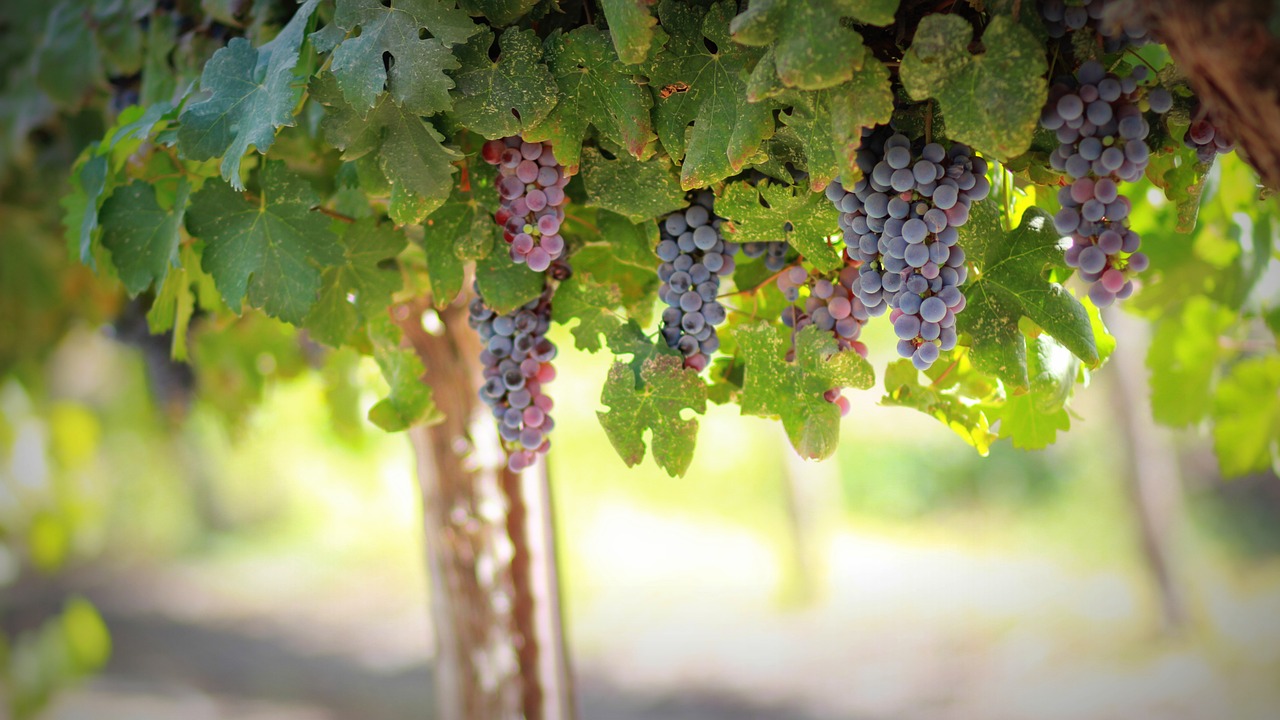
Organic Farming Techniques
Organic farming techniques are not just a trend; they represent a fundamental shift in how we approach agriculture. Imagine a farm where the soil is alive with beneficial microorganisms, crops are nurtured without synthetic fertilizers, and pests are managed through natural predators rather than harsh chemicals. This is the essence of organic farming—a system that emphasizes sustainability, biodiversity, and a deep respect for the environment.
At the heart of organic farming lies the principle of working with nature rather than against it. Farmers utilize a variety of methods to enhance soil health, promote crop diversity, and reduce reliance on artificial inputs. For instance, cover cropping is a popular technique where crops like clover or rye are planted during the off-season. These cover crops not only prevent soil erosion but also enrich the soil with nutrients when they decompose. This practice is akin to giving the soil a much-needed spa treatment, rejuvenating it for the next planting season.
Another essential aspect of organic farming is the use of companion planting. This technique involves growing different crops in proximity to one another to enhance growth and deter pests. For example, planting marigolds alongside vegetables can help repel harmful insects, creating a natural pest control system. It's like having a team of bodyguards for your plants, ensuring they thrive without the need for chemical pesticides.
Organic farmers also prioritize the use of natural fertilizers, such as compost and manure, which provide essential nutrients to crops while improving soil structure. This method not only reduces the carbon footprint associated with synthetic fertilizers but also promotes a healthier ecosystem. Think of it as recycling nutrients back into the earth, creating a closed-loop system that benefits both the farm and the planet.
In addition to these practices, organic farming encourages biodiversity. By cultivating a variety of crops, farmers can create a more resilient agricultural system that is less susceptible to diseases and pests. This diversity acts like a safety net, ensuring that if one crop fails, others can still thrive. It's a natural insurance policy that supports both food security and environmental health.
Moreover, organic farming techniques often incorporate integrated pest management (IPM), which focuses on long-term prevention of pests through a combination of cultural, biological, and mechanical practices. For instance, introducing beneficial insects, such as ladybugs, can help control aphid populations without the need for chemical interventions. This holistic approach not only protects crops but also fosters a balanced ecosystem.
Ultimately, organic farming techniques are about creating a sustainable future for agriculture. By prioritizing natural processes, farmers can produce healthy food while also caring for the planet. As consumers increasingly seek out organic products, the demand for these practices will only grow, paving the way for a more sustainable and eco-friendly agricultural landscape.
- What is organic farming? Organic farming is an agricultural method that emphasizes the use of natural processes and materials to grow crops, avoiding synthetic fertilizers and pesticides.
- How do organic farmers control pests? Organic farmers use techniques such as companion planting, natural predators, and integrated pest management to control pests without synthetic chemicals.
- Are organic foods healthier? Many believe that organic foods are healthier due to the absence of synthetic chemicals and the focus on nutrient-rich soil, although research is ongoing.
- Can organic farming feed the world? While organic farming can contribute significantly to food production, it may need to be part of a broader strategy that includes various agricultural practices to meet global food demands.
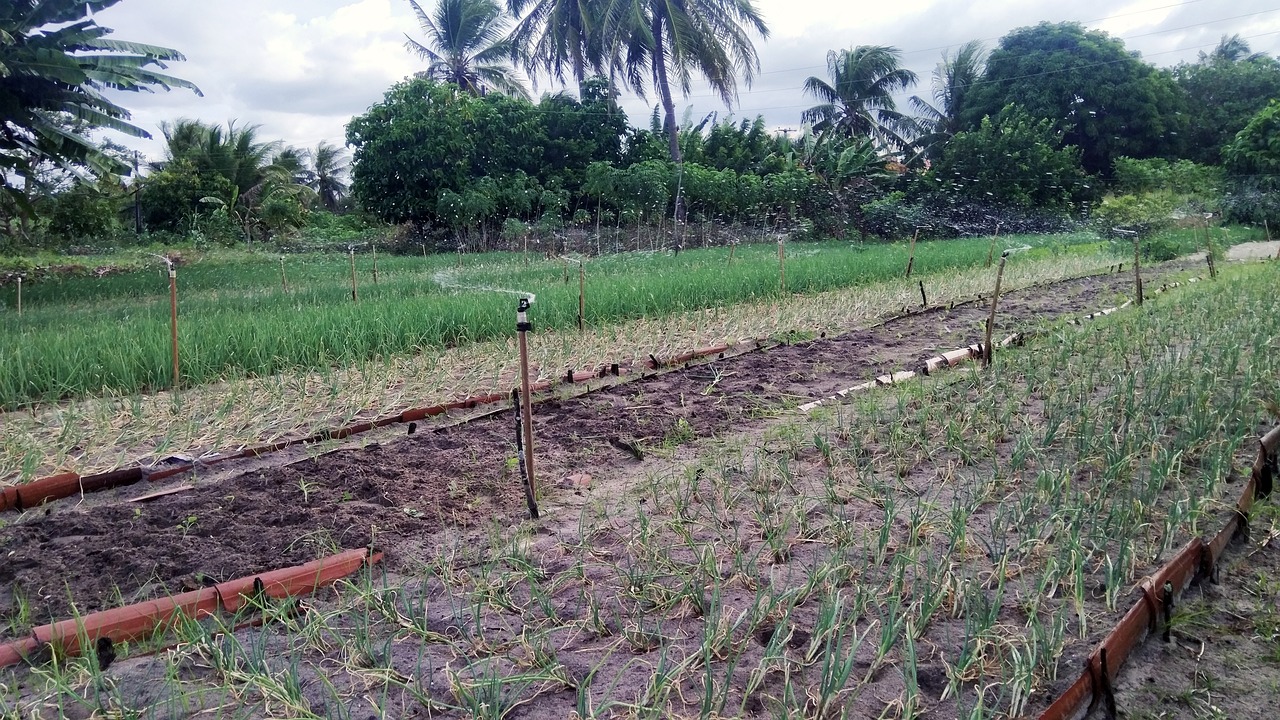
Agroforestry and Permaculture
Agroforestry and permaculture are not just buzzwords; they represent a revolutionary approach to farming that harmonizes agricultural practices with ecological principles. Imagine a farm where trees, crops, and livestock coexist, creating a thriving ecosystem rather than a battleground of monocultures. This is the essence of agroforestry. By integrating trees into farming landscapes, farmers can enhance biodiversity, improve soil health, and create a more resilient agricultural system. Not only do trees provide shade and shelter for crops and animals, but they also contribute to carbon sequestration, helping to combat climate change.
Permaculture, on the other hand, takes this concept a step further by designing agricultural systems that mimic natural ecosystems. It’s all about creating a sustainable environment where every element has a purpose, much like a well-orchestrated symphony. For instance, in a permaculture setup, you might see chickens roaming under fruit trees. The chickens provide pest control while their droppings enrich the soil, leading to healthier plants. This symphonic relationship between different species is what makes permaculture so appealing to many farmers today.
One of the remarkable aspects of agroforestry and permaculture is their ability to reduce dependency on chemical inputs. By fostering a diverse ecosystem, these practices naturally manage pests and diseases. This not only leads to healthier crops but also minimizes environmental impact. The use of cover crops, for example, can prevent soil erosion and improve soil fertility, showcasing how these methods can lead to sustainable agricultural practices.
Moreover, the economic benefits of these practices are substantial. Farmers who adopt agroforestry and permaculture often find that they can diversify their income streams. They can sell timber, fruits, nuts, and other products, thereby creating a more stable financial foundation. The initial setup may require some investment and learning, but the long-term returns—both ecological and economic—are well worth it.
In summary, agroforestry and permaculture are not merely trends; they are essential strategies for the future of agriculture. By embracing these practices, we can cultivate a more sustainable, resilient, and productive farming landscape that benefits both farmers and the planet. As we look ahead, the integration of these systems into mainstream agriculture could be the key to addressing some of the most pressing challenges we face in food production and environmental conservation.
- What is agroforestry? Agroforestry is a land management system that integrates trees and shrubs into agricultural landscapes to create a more sustainable and productive environment.
- How does permaculture differ from traditional farming? Permaculture focuses on designing agricultural systems that mimic natural ecosystems, promoting sustainability and biodiversity, while traditional farming often relies on monocultures and synthetic inputs.
- Can agroforestry and permaculture improve soil health? Yes, both practices enhance soil health through increased organic matter, improved nutrient cycling, and reduced erosion.
- What are the economic benefits of these practices? Farmers can diversify their income by producing various products, reducing costs associated with chemical inputs, and improving resilience against market fluctuations.

The Role of Biotechnology
Biotechnology is not just a buzzword; it's a game-changer in the agricultural landscape. With the world's population expected to reach nearly 10 billion by 2050, the demand for food is skyrocketing. This is where biotechnology steps in, offering innovative solutions that tackle some of the most pressing challenges in agriculture today. From enhancing crop resilience to improving nutritional content, biotechnology is paving the way for a sustainable future.
One of the most significant contributions of biotechnology to agriculture is the development of Genetically Modified Organisms (GMOs). These crops are engineered to withstand various environmental stresses such as drought, pests, and diseases. This not only leads to higher yields but also reduces the need for chemical pesticides, making farming practices more sustainable. For instance, crops like Bt corn and Roundup Ready soybeans have been designed to resist specific pests and herbicides, allowing farmers to manage their fields more efficiently.
Furthermore, biotechnology fosters advancements in crop breeding innovations. Techniques such as CRISPR (Clustered Regularly Interspaced Short Palindromic Repeats) allow scientists to make precise modifications to plant genetics. This means that farmers can access improved crop varieties much faster than traditional breeding methods would allow. Imagine being able to develop a new strain of wheat that grows in less water and yields more grain in just a few seasons—this is the potential of biotechnology!
In addition to enhancing crop yields, biotechnology also plays a crucial role in improving the nutritional content of food. Biofortification is a process used to increase the nutritional value of crops. For example, Golden Rice has been genetically modified to contain higher levels of Vitamin A, addressing malnutrition in regions where rice is a staple food. By integrating essential vitamins and minerals into commonly consumed crops, biotechnology can significantly improve the health of populations around the world.
However, the role of biotechnology in agriculture is not without controversy. Many people express concerns about the safety and ethics of GMOs. It's essential to engage in open conversations about these concerns, weighing the benefits against potential risks. Regulatory bodies worldwide conduct extensive testing to ensure that GMOs are safe for consumption and the environment. Transparency in the development and deployment of biotechnological innovations is key to gaining public trust.
| Biotechnology Innovations | Benefits | Examples |
|---|---|---|
| Genetically Modified Organisms (GMOs) | Higher yields, pest resistance | Bt corn, Roundup Ready soybeans |
| CRISPR Technology | Precise genetic modifications | Improved crop varieties |
| Biofortification | Enhanced nutritional content | Golden Rice |
As we look to the future, the role of biotechnology in agriculture will undoubtedly expand. Integrating these innovations with sustainable practices can create a more resilient food system. By embracing biotechnology, we can not only boost productivity but also ensure that our agricultural practices align with the principles of environmental stewardship.
- What are GMOs? Genetically Modified Organisms are crops that have been altered using biotechnology to exhibit desired traits, such as pest resistance or drought tolerance.
- Are GMOs safe to eat? Yes, extensive research and regulatory reviews confirm that GMOs are safe for human consumption and do not pose risks to health or the environment.
- How does CRISPR work? CRISPR is a gene-editing technology that allows scientists to make precise changes to DNA, improving crop traits more efficiently than traditional breeding methods.
- What is biofortification? Biofortification is the process of increasing the nutritional value of crops through biotechnology, addressing nutrient deficiencies in populations.
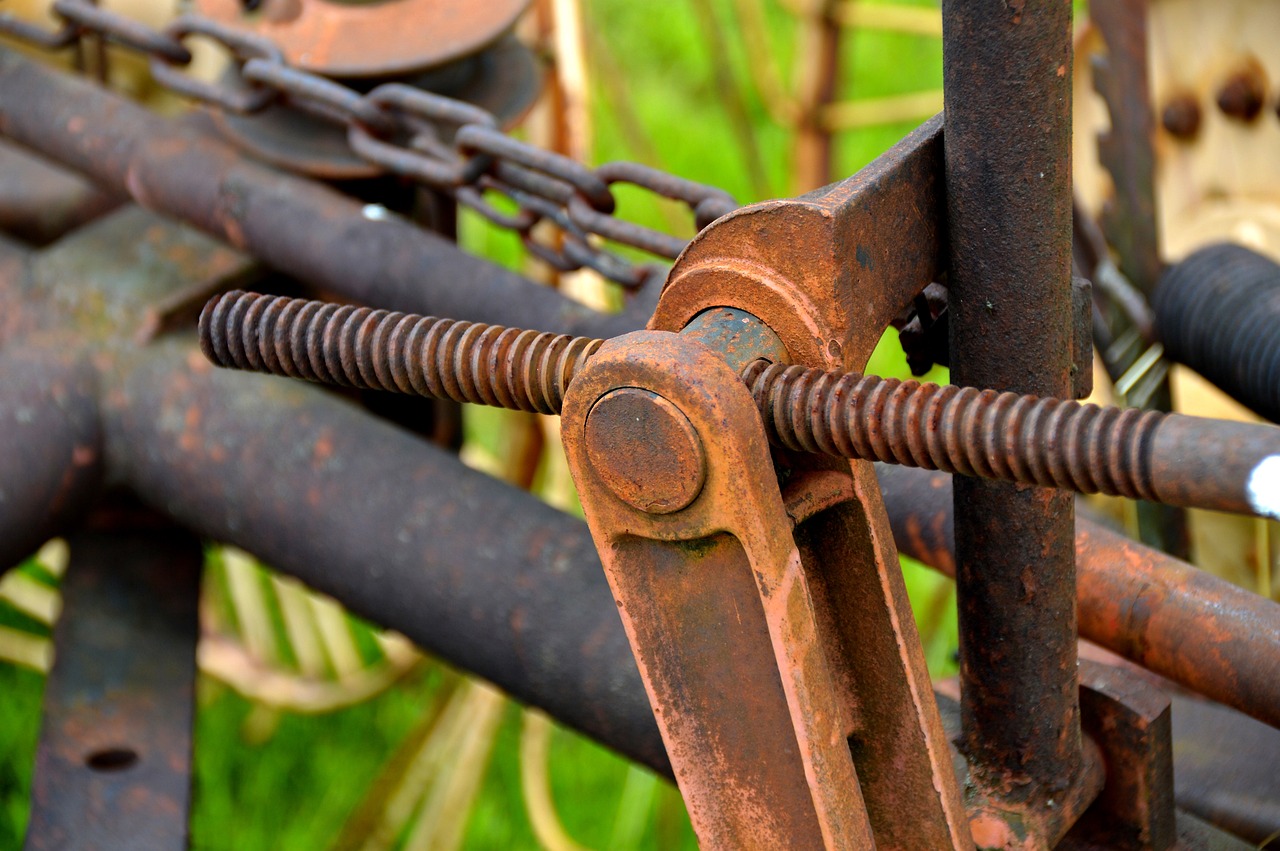
Genetically Modified Organisms (GMOs)
Genetically Modified Organisms, commonly known as GMOs, have emerged as a pivotal solution in the quest for sustainable agriculture. These organisms are engineered through biotechnology to possess specific traits that enhance their resilience to environmental stresses, improve yield, and reduce dependency on harmful pesticides. Imagine a world where crops can thrive in drought conditions or resist pests without the need for chemical interventions—this is the promise that GMOs bring to the table.
One of the most significant advantages of GMOs is their ability to withstand various environmental challenges. For instance, genetically modified corn and soybeans have been developed to resist drought, which is increasingly important as climate change alters weather patterns. With these modifications, farmers can maintain productivity even in less-than-ideal conditions, ultimately contributing to food security.
Moreover, GMOs play a crucial role in reducing pesticide use. Traditional farming methods often rely heavily on chemical pesticides, which can have detrimental effects on the environment and human health. However, with crops engineered to be pest-resistant, the need for these chemicals diminishes significantly. This not only leads to a healthier ecosystem but also reduces costs for farmers, allowing them to allocate resources more efficiently.
To further illustrate the benefits of GMOs, consider the following table that compares traditional crops with genetically modified varieties:
| Trait | Traditional Crops | Genetically Modified Crops |
|---|---|---|
| Resistance to Pests | High reliance on chemical pesticides | Inherent pest resistance |
| Yield | Variable, often lower | Higher and more stable yields |
| Environmental Stress Tolerance | Limited | Enhanced drought and flood resistance |
| Health Benefits | Standard nutritional content | Potential for enhanced nutritional profiles |
Furthermore, GMOs have the potential to address nutritional deficiencies in populations around the globe. For example, biofortified crops, such as Golden Rice, have been engineered to contain higher levels of essential vitamins, helping to combat malnutrition in developing countries. This innovative approach not only addresses immediate food supply issues but also contributes to long-term health benefits for communities.
Despite the numerous advantages, the use of GMOs is not without controversy. Public perception often sways against genetically modified foods, fueled by concerns over safety, environmental impact, and ethical considerations. It's essential to engage in open dialogues about these issues, emphasizing the rigorous testing and regulatory processes that GMOs undergo before reaching the market. By fostering understanding and transparency, we can better appreciate the role GMOs play in modern agriculture.
In conclusion, GMOs represent a significant advancement in agricultural technology, offering solutions that align with the goals of sustainability and food security. As we navigate the challenges posed by climate change and a growing global population, embracing the potential of genetically modified organisms could be a key factor in ensuring a resilient agricultural future.
- What are GMOs? GMOs are organisms whose genetic material has been altered using biotechnology to exhibit desired traits.
- Are GMOs safe to eat? Yes, GMOs undergo extensive testing and regulatory scrutiny to ensure they are safe for consumption.
- How do GMOs benefit farmers? GMOs can lead to higher yields, reduced pesticide use, and increased resilience to environmental stresses.
- What is the environmental impact of GMOs? GMOs can reduce the need for chemical pesticides and promote sustainable farming practices, which can benefit the environment.

Crop Breeding Innovations
When it comes to the future of agriculture, are taking center stage, and for good reason! These advancements are not just about creating bigger and better crops; they represent a revolution in how we approach food production in an ever-changing world. Imagine being able to grow crops that can withstand extreme weather conditions or pests without the heavy use of chemicals. This is becoming a reality thanks to cutting-edge techniques like CRISPR and other genetic engineering methods.
One of the most exciting aspects of crop breeding innovations is their ability to enhance crop resilience. With climate change posing significant challenges, crops that can tolerate drought, flooding, or temperature fluctuations are more important than ever. Through precise modifications in plant genetics, scientists can develop varieties that not only survive but thrive under adverse conditions. This means farmers can produce food even when nature throws a curveball.
Additionally, these innovations contribute to the overall sustainability of agriculture. By creating crops that require fewer inputs—like water, fertilizers, and pesticides—we can reduce the environmental footprint of farming. For instance, some genetically modified organisms (GMOs) are designed to be pest-resistant, which not only helps farmers save on pesticide costs but also promotes healthier ecosystems. The benefits are clear, but they come with the need for responsible management and public understanding.
Moreover, the role of advanced breeding techniques cannot be overstated. Traditional methods of breeding can be time-consuming and unpredictable. In contrast, modern techniques allow for rapid development of improved crop varieties, significantly speeding up the process. This is where technologies like CRISPR shine. They enable scientists to make targeted changes to the DNA of plants, resulting in faster development of crops that meet the demands of both consumers and the environment.
To illustrate the impact of these innovations, consider the following table that highlights some key advancements:
| Innovation | Description | Benefits |
|---|---|---|
| CRISPR Technology | A gene-editing tool that allows for precise modifications in plant DNA. | Faster development of resilient crops, reduced reliance on chemical inputs. |
| Marker-Assisted Selection | Uses genetic markers to select plants with desirable traits. | Increases efficiency in breeding programs, enhances crop quality. |
| Genome Sequencing | Mapping the complete DNA sequence of crops. | Identifies traits linked to yield and disease resistance, leading to better breeding strategies. |
In conclusion, the field of crop breeding is undergoing a remarkable transformation, driven by innovations that promise to enhance food security and sustainability. As we navigate the complexities of modern agriculture, it's crucial to embrace these technologies while ensuring ethical practices and public engagement. After all, the goal is not just to feed the world but to do so in a way that protects our planet for future generations.
- What is CRISPR technology? - CRISPR is a gene-editing tool that allows scientists to make precise changes to the DNA of organisms, including crops.
- How do crop breeding innovations help with climate change? - These innovations create crops that are more resilient to extreme weather, thus ensuring food production even in challenging conditions.
- Are GMOs safe for consumption? - Yes, GMOs undergo rigorous testing and regulatory processes to ensure they are safe for human consumption and the environment.
- What are the environmental benefits of advanced crop breeding? - They can lead to reduced use of pesticides and fertilizers, lower water consumption, and less land degradation.
Frequently Asked Questions
- What is precision agriculture?
Precision agriculture is a farming management concept that uses data-driven techniques to optimize field-level management regarding crop farming. It focuses on ensuring efficient resource use, maximizing crop yield, and minimizing environmental impact.
- How does AI enhance farming practices?
AI and machine learning enhance farming by providing predictive analytics that improve decision-making processes. This includes everything from selecting the right crops to managing pests, ultimately leading to more efficient and productive farming.
- What are the benefits of using drones in agriculture?
Drones offer several benefits in agriculture, including aerial imagery for crop health analysis, efficient irrigation management, and targeted pesticide applications. They help farmers monitor their fields more effectively and make informed decisions.
- How do smart irrigation systems work?
Smart irrigation systems utilize IoT technology to monitor soil moisture levels and weather conditions. This enables farmers to apply water precisely when and where it's needed, conserving resources while promoting healthier crops.
- What are sustainable farming practices?
Sustainable farming practices focus on methods that protect the environment while ensuring food security and economic viability for farmers. This includes organic farming, agroforestry, and permaculture, which all promote biodiversity and resource conservation.
- What role does biotechnology play in agriculture?
Biotechnology plays a crucial role in agricultural innovation, offering solutions for enhancing crop resilience, pest resistance, and nutritional content. This helps address global food challenges and contributes to sustainable agricultural practices.
- What are genetically modified organisms (GMOs)?
GMOs are organisms whose genetic material has been altered using genetic engineering techniques. They are designed to withstand environmental stresses, improve yield, and reduce pesticide use, thereby contributing to food security.
- How do crop breeding innovations like CRISPR work?
CRISPR is a groundbreaking technology that allows for precise modifications to plant genetics. This results in faster development of improved crop varieties, which can lead to better yields and more resilient plants.






